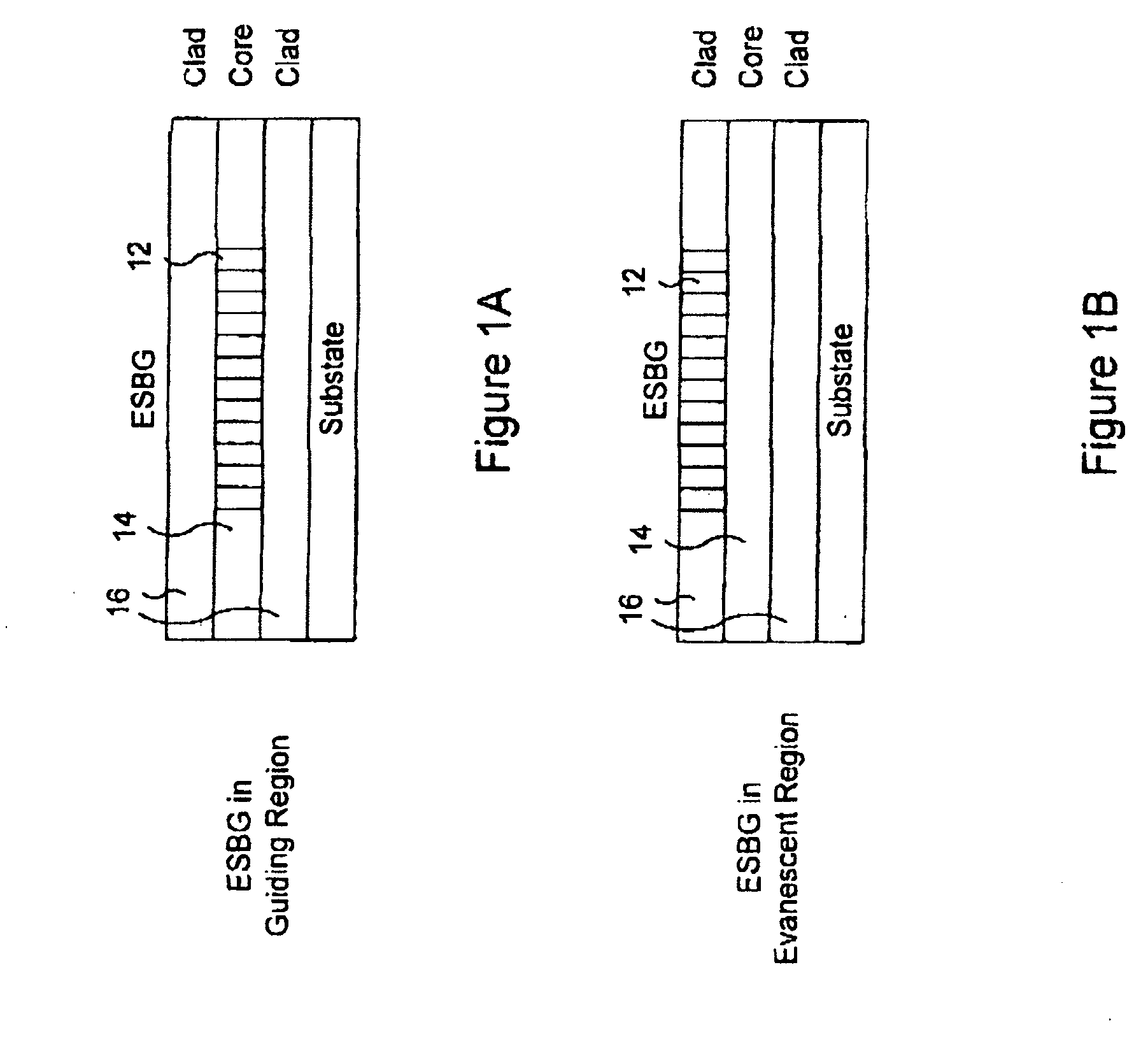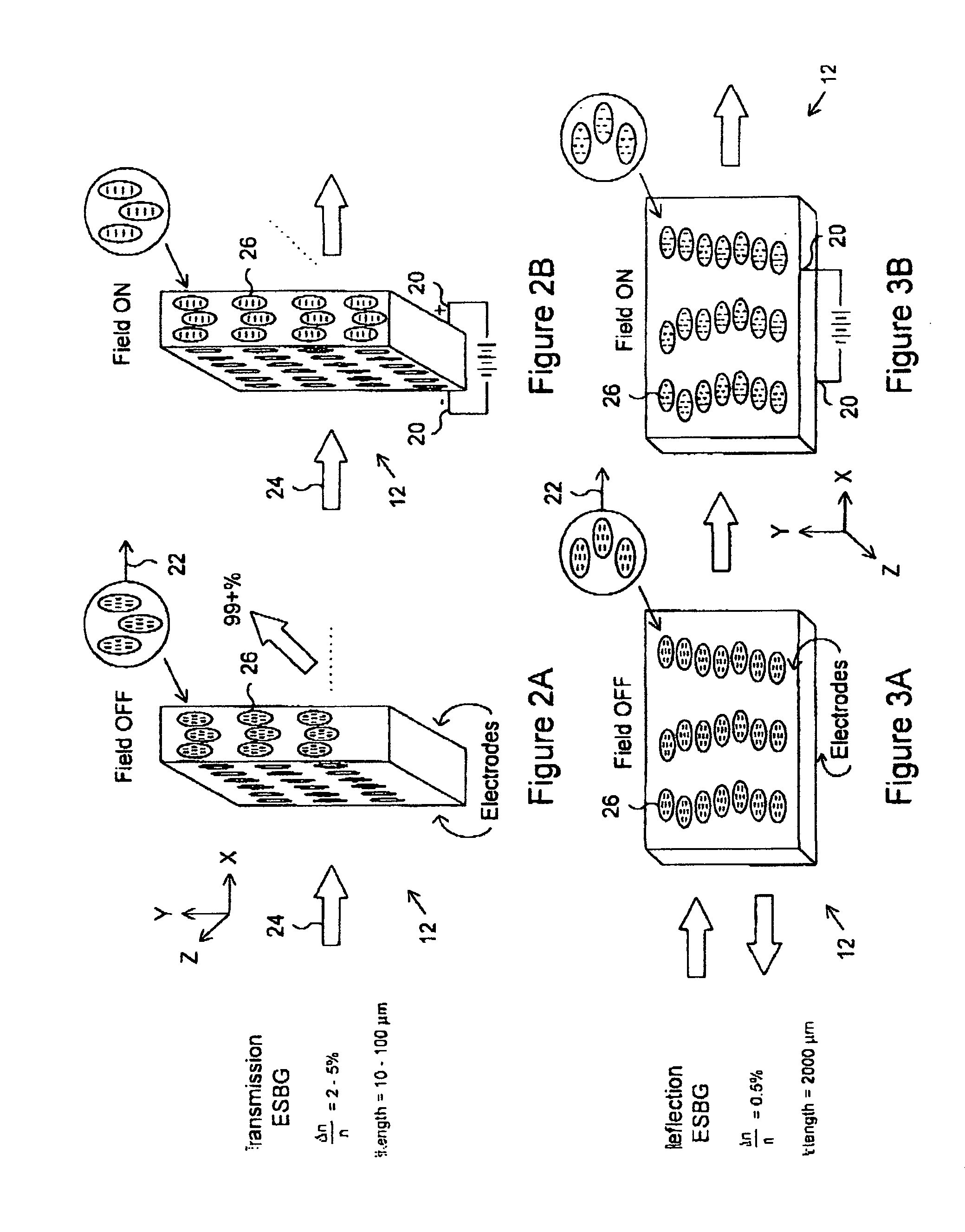Switchable optical components
a technology of optical components and switches, applied in the field of switches, can solve the problems of not meeting all requirements at the same time, the data capacity demands of fiber optic networks are also becoming more complex, and the design of switches such as large switches is very complex
- Summary
- Abstract
- Description
- Claims
- Application Information
AI Technical Summary
Benefits of technology
Problems solved by technology
Method used
Image
Examples
Embodiment Construction
[0071] The '950 application teaches a variety of free space, waveguide and fiber optic components utilizing ESBG technology to perform various switching, reflection, filtering, routing and other functions for optical signals on single wavelength or multiwavelength lines. Bragg gratings may be classified as freespace or waveguide gratings, and within each category as transmission or reflection gratings. ESBGs corresponding to each such type converting each to a switchable form. As illustrated in FIG. 1A, an ESBG 12 may be located in the core or guiding region 14 of a planar waveguide or, as illustrated in FIG. 1B, the ESBG 12 may be in the evanescent or cladding region 16 thereof. As was indicated in the '950 application, ESBGs may be utilized to perform a variety of functions; however, these functions may be generally characterized as transmission or reflection functions. Since the desirable characteristics and appropriate designs of ESBGs when used for transmission are different th...
PUM
| Property | Measurement | Unit |
|---|---|---|
| insertion loss | aaaaa | aaaaa |
| insertion loss | aaaaa | aaaaa |
| wavelengths | aaaaa | aaaaa |
Abstract
Description
Claims
Application Information
 Login to View More
Login to View More - R&D
- Intellectual Property
- Life Sciences
- Materials
- Tech Scout
- Unparalleled Data Quality
- Higher Quality Content
- 60% Fewer Hallucinations
Browse by: Latest US Patents, China's latest patents, Technical Efficacy Thesaurus, Application Domain, Technology Topic, Popular Technical Reports.
© 2025 PatSnap. All rights reserved.Legal|Privacy policy|Modern Slavery Act Transparency Statement|Sitemap|About US| Contact US: help@patsnap.com



